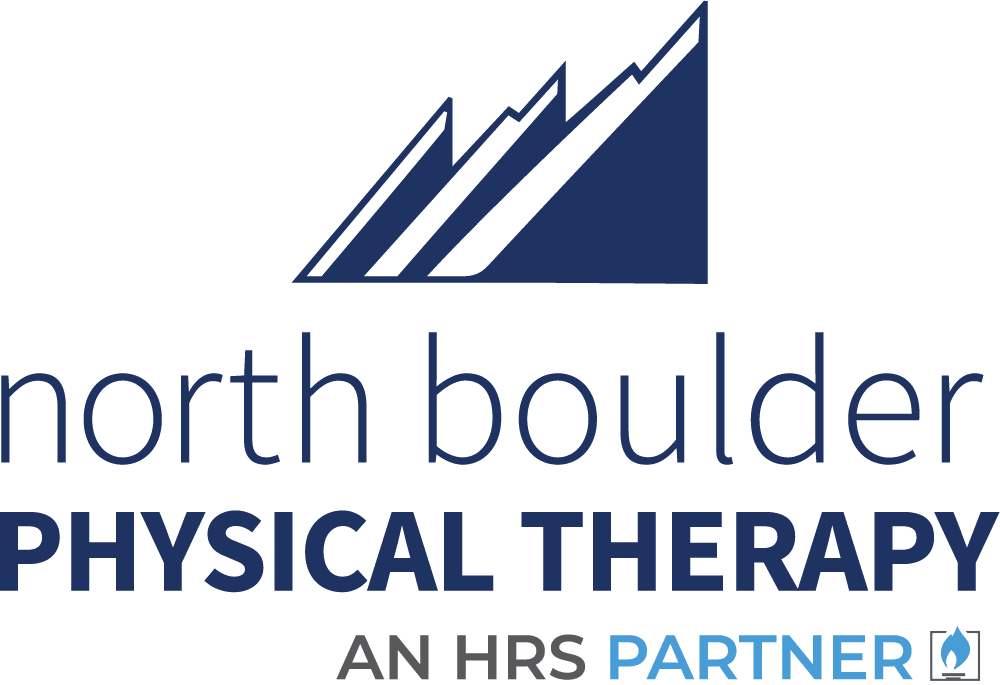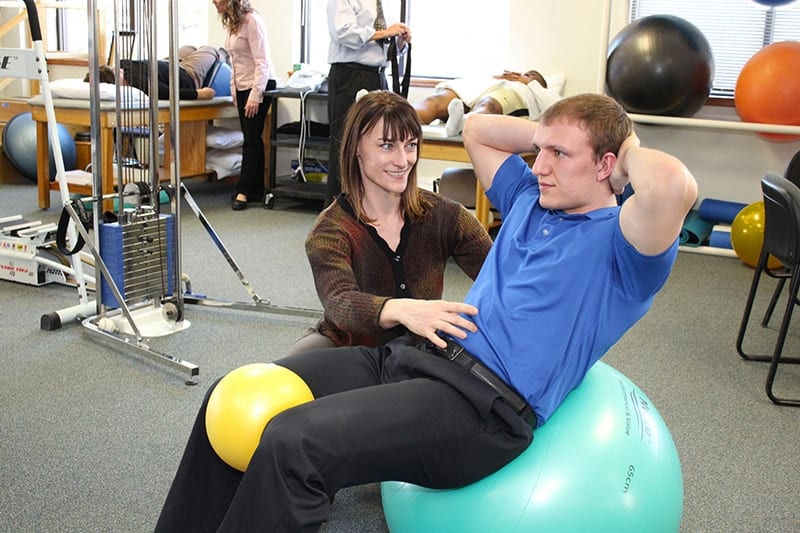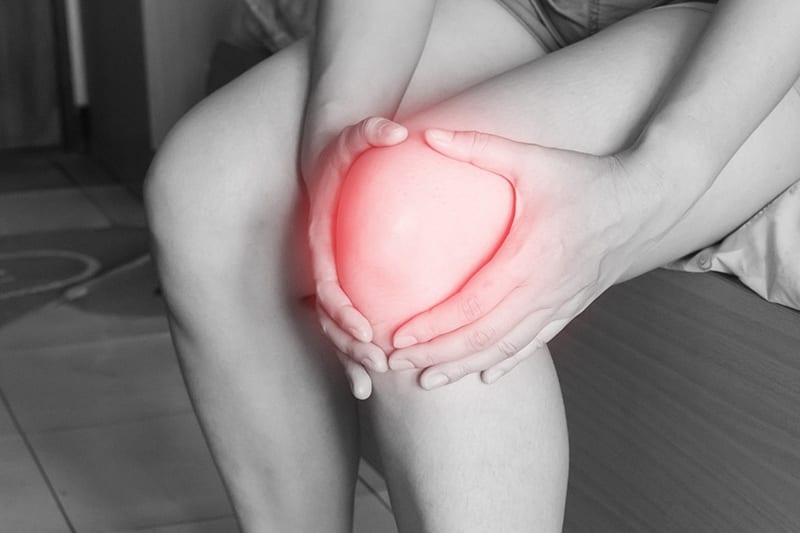 Whether you’ve experienced a sports or occupational injury, North Boulder Physical Therapy offers all types of physical therapy treatment. Our goal is to provide you with a complete assessment followed by a regimen of exercises and other modalities to improve and even restore function in the body. Our team of licensed, trained and deeply experienced professionals can help with common ailments, post-surgery recovery, neurological and movement disorders. If your physician or surgeon has referred you to begin physical therapy, we hope that some of the information we provide here sheds light on what to expect.
Whether you’ve experienced a sports or occupational injury, North Boulder Physical Therapy offers all types of physical therapy treatment. Our goal is to provide you with a complete assessment followed by a regimen of exercises and other modalities to improve and even restore function in the body. Our team of licensed, trained and deeply experienced professionals can help with common ailments, post-surgery recovery, neurological and movement disorders. If your physician or surgeon has referred you to begin physical therapy, we hope that some of the information we provide here sheds light on what to expect.
The Evaluation of Your Condition
Before we can create a personalized plan that incorporates various types of physical therapy treatment, your PT will first conduct an evaluation of your current capabilities. They will discuss the nature of your injury or medical issue and gather as much information as possible. We can also work directly with your doctors to get a complete picture of how to assist in your recovery. Our goal is to find the cause or root of the problem so that we treat the actual issue and not just a symptom.
Once the assessment is complete, your physical therapist will develop a treatment plan that addresses areas of pain, weakness, and limited or loss of movement. This may include manual therapies to bring back tissue function such as stretching, massage and exercise like Pilates. Your PT may also want to use passive modalities, from the basic application of heat and ice, to laser therapy, ultrasound, traction and electrical stimulation. They will go over the entire plan with you and answer any questions you might have about the recommended types of physical therapy treatment.
Before you get started, we will also discuss what to expect as you progress through physical therapy with us. We know that your injury may have occurred in a split second, but a proper recovery doesn’t work in the same way. A return to sport, even independent living, will take time. What we offer takes effort on your part and patience. Treatment can take weeks to complete, longer depending on your condition. For patients suffering chronic issues, it can be an ongoing process.
Types of Physical Therapy Treatment
Once a plan is in place, you’ll move forward with your therapist accordingly. While there are a wide variety of treatment options available, let’s cover a few of the basics here.
- Manual Therapy – To treat soft tissues, joints and muscles, manual therapy (such as massage and stretching) is used to improve range of motion, address any pain you might be experiencing, reduce swelling and inflammation, help muscles heal, as well as improve mobility and function. It’s used for a wide variety of injuries and issues, from neck and back pain, to bursitis and post-surgery recovery. It can also help with headaches, TMJ, and joint pain all over the body.
- Cold/Ice – It might seem old-fashioned, but this tried and true therapy method has endured over the years because it works. If you have an injury that presents swelling and inflammation, as well as pain and muscle spasms, ice will likely be included in your treatment plan. Not only does it help right after an injury, but cold/ice therapy can be used to improve the outcome of manual therapy by reducing soft tissue swelling and allowing joints to be more flexible.
- Heat, Dry or Moist – For muscle tightness, spasms and pain, heat is another of the seemingly simple types of physical therapy treatment. While it likely won’t be a central component of a PT’s plan, it’s similar to cold/ice therapy in that it can make manual therapy more effective. A dry or deeper moist heat allows muscles, tendons and ligaments to be more mobile and pliable so that stretching and other manual modalities can be implemented successfully.
- Ultrasound – If this word sounds familiar, you’ve probably had an ultrasound to see your baby growing inside of you, to have a gallbladder issue diagnosed, and more. In physical therapy, high-frequency sound waves are used in a completely different way, safely producing heat deep within the body, further than any type of heat pack. Ultrasound can help relieve pain, improve your circulation and again, loosen and prepare muscle and soft tissues for stretching and manual therapy, as well as exercising.
- Electrical Stimulation – ESTIM therapy sounds scary, but it’s truly nothing to worry about. We are not going to zap you, we promise. Instead, your PT will use various and very minor forms of steady electrical current to contract and relax your muscles. This can be used with patients who are unable to move or exercise the targeted muscle on their own – basically reviving dormant function and mobility that would otherwise take much longer to recover via exercise.
- Cold Laser Therapy – Cold or Low-Level Laser Therapy (LLLT) is a safe, non-invasive method of relieving pain and helping accelerate healing in patients suffering from acute and chronic issues such as arthritis, back and headache pain, or other conditions. It can also reduce swelling, address fatigued muscles and improve functionality. LLLT uses a small device that emits non-thermal photons of light that pass through the skin where it interacts with the targeted cells.
- Traction – Think of a spring that’s been pushed down so much that it no longer springs. While our spines aren’t exactly a spring, they do carry all of our weight throughout each day. Over time, this weight causes the spine to compress the discs between each vertebra and create a whole lot of back pain. Traction, either via machine or manually, pulls everything back apart, relieving pain, nerve irritation, muscle spasms and other issues.
- Exercise – Yes, exercise is one of the most common types of physical therapy treatments. And for good reason, it works. In order for you to recover and remain mobile, independent and as pain-free as possible, a regimen of exercise is a must. Your PT will pinpoint the specific exercises according to your condition, targeting specific muscles and other problem areas. Some of these will be incorporated into your sessions while others will be for you to keep up on at home.
Whether you’ve suffered an acute injury or have chronic pain issues, North Boulder Physical Therapy is here to facilitate a lasting recovery. Our PTs will provide various types of physical therapy treatments based on your unique needs and work with you one-on-one to improve mobility, decrease pain and help you achieve your goals. With offices in Boulder, Golden and Westminster, it’s likely that our team of dedicated professionals is well within your reach. Please call today to schedule your appointment.



